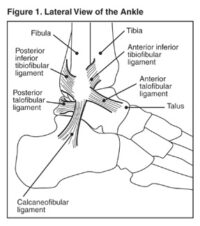SPRAINS AND STRAINS
WHAT ARE SPRAINS AND STRAINS?
Sprains and strains affecting your daily routine? Read our guide to help get you back to your normal everyday activities!
A sprain is a stretch and/or tear of a ligament (a band of fibrous tissue that connects two or more bones at a joint). You can injure one or more ligaments at the same time. The severity of your injury depends on the extent of injury (whether a tear is partial or complete) and the number of ligaments involved.
A strain is an injury to either a muscle or a tendon (fibrous cords of tissue that connect muscle to bone). Depending on the severity of your injury, a strain may be a simple overstretch of the muscle or tendon, or it can be due to a partial or complete tear.
Strains can be acute or chronic. An acute strain is associated with a recent trauma or injury; it also can occur after improperly lifting heavy objects or overstressing the muscles. Chronic strains are usually the result of overuse: prolonged, repetitive movement of the muscles and tendons.
WHO GETS SPRAINS AND STRAINS?
Sprains: Although sprains can occur in both the upper and lower parts of the body, the most common site is the ankle.



Strains: Two common sites for a strain are the back and the hamstring muscle (located in the back of the thigh). You may be more likely to develop a strain if you participate in contact sports such as: soccer, football, hockey, boxing, or wrestling.
You may be more likely to develop a strain in the hand or forearm if you participate in: gymnastics, tennis, rowing, golf, or other sports that require extensive gripping. You may be more likely to develop a strain in the elbow strains if you participate in: racquet sports, throwing, or contact sports.
TYPES OF SPRAINS AND STRAINS
Strains can be acute or chronic. An acute strain is associated with a recent trauma or injury; it also can occur after improperly lifting heavy objects or overstressing the muscles. Chronic strains are usually the result of overuse: prolonged, repetitive movement of the muscles and tendons. Doctors categorize or grade sprains.

SYMPTOMS OF SPRAINS AND STRAINS
DIAGNOSIS OF SPRAINS AND STRAINS
Doctors diagnose sprains and strains by:
- Asking questions about the injury.
- Examining the area of the inquiry.
- Ordering an x-ray to make sure you don’t have a fracture or broken bone.
Your doctor may order a magnetic resonance imaging or MRI to help tell the differences between a partial injury and a complete tear in the ligament.
TREATMENT OF SPRAINS AND STRAINS
Doctors use similar treatments for sprains and strains, usually in 2 stages.
HOW CAN AVALA HELP YOU?
Our team of expert orthopedic physicians can review and diagnose your sprains and strains to help find a solution for you to live a happy and healthier live.
“Sprains and Strains.’” NINDS, U.S. Department of Health and Human Services, January 2015, https://www.niams.nih.gov/health-topics/sprains-and-strains/advanced




